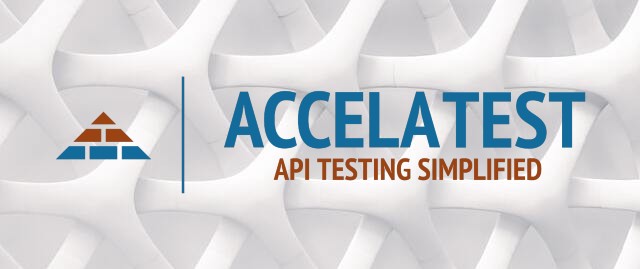

Testing and automation is a significant phase in traditional SDLC and Agile development methodology for software development. Testing proceeds in various categories such as functional, behavior, acceptance, and more. TDD, BDD, and ATDD are some of the popular software development techniques used for automated test coverage. “No code goes in until the tests go on” is the fundamental concept behind all TDD, BDD, and ATDD.
This article will inform you about each technique in depth along with their benefits, differences among them, the best way to utilize them, and how AccelaTest can help you with test automation in your projects.
TDD
What does TDD stand for in software development?
In application development, TDD stands for Test-Driven Development. TDD is a short repetitive development life cycle used for writing tests before you are driven to write implementations.
What is TDD?
The fundamental concept of the TDD life cycle is to turn requirements into particular test cases, then improve the software until the tests pass. Requirements are created as developer unit tests in this method. However, testers usually work with their developers to create thorough tests. Some techniques teams have great success with are equivalence partitioning and boundary value analysis. Since this life cycle has three steps called “red,” “green,” and “refactor,” it is also known as the “red-green-refactor” life cycle.
What is the Red-Green-Refactor Life Cycle?
Step “Red” – First, you write a failing test in a way that says what your code should be doing.
Step “Green” – Now, you need to make the test pass. The software developer writes the minimum number of lines of code required to make the failing tests pass.
Step “Refactor” – During this step, you would be modifying the code you wrote in the green step to make your test pass, and you’re going to enhance it only when required and applicable.
Then you go back to the red step and write a new test. Repeat this life cycle until your software is completed. Repeating the Refactor step will allow you to quickly test your changes against every possible scenario.
You can find many open-source TDD tools built to support many frameworks and projects in different languages. A few of them are csUnit and NUnit for the .NET framework, DocTest for Python projects, JUnit for Java projects, JBehave, and more.
Benefits of TDD
- High-quality code
- Maximum code coverage
- Boost programmer confidence and eradicate fear of code changes – These tests are always accurate. They are your source of truth, and no matter what happens to your code, if the business logic is still sound, these should pass. When one of the tests fails, a breaking code change has occurred. You accidentally had a knock-on effect on another piece of software, and you go back and change it.
- Refactoring becomes easier by becoming safer – The previous point makes refactoring way more manageable because you can go to your code and change it. Furthermore, if the test fails, you receive immediate feedback on what you broke.
- Saves time and money – This method might look like something that makes you write more code to achieve the same thing, but it is way more beneficial from a time and money-saving aspect in the long run.
BDD
What does BDD stand for?
BDD stands for Behavior Driven Development.
What is BDD?
BDD traces its origins to TDD, and defines various ways to develop epics based on their behavior. The primary aim of this methodology is to enhance collaboration between teams, specifically the QAs, developers, and business experts. A special syntax (Gherkin) creates real examples of how the system shall function. Thus, BDD rids requirements of abstract language in favor of simpler language.
In any organization, we have business teams who understand user scenarios, user modules, and how users interact with the applications. Then, we have technical teams, including developers, testers, and automation engineers, who do the implementations and testing. Usually, there’s a gap between the understanding of the business team and the technical teams’ understanding. Bridging this gap is the aim of BDD.
So, using the Business Driven Development process, you can build a shared understanding between teams on the application’s behavior. Also, this process generates standard documentation that all stakeholders can understand. Thus, it serves as a single source of truth for every team member in the organization.
What are the 3 phases of BDD?
The typical process starts with a new user story. Then, you arrange a meeting including business teams and QA team. In those meetings, you follow these 3 phases.
Phase 1 – Discovery
In this phase, you explore and discuss the user story and how the system should behave. The outcome of this phase is the agreed-on behavior of the system.
Phase 2 – Formulation
In this phase, examples are created, discussed, agreed upon, and finally approved. Then models are documented to make it easy to automate development and testing. Finally, documented examples that will be used as acceptance tests later are the outcome of this phase. Thus, it is also known as living documentation.
Phase 3 – Automation
In this phase, each of the documented examples is implemented according to the agreed system behavior, and an automation BDD test is designed for each user story to oversee development. Thus, the outcomes of this phase are code implementation and automation tests.
There are BDD tools that support many different frameworks: SpecFlow for the .NET framework, Behave and Lettuce for the Python framework, JBehave and Concordion for the Java framework, Behat for the PHP framework, and more. Cucumber is the most popular tool that supports the Ruby framework, and it can understand your documentations and then turn them into automated unit tests.
Benefits of BDD
- Strong collaboration – As mentioned earlier, Behavior Driven Development fills the gap between different teams in the organization. It increases the communication, engagement, and number of conversations regarding user stories within the development team, which helps develop innovative ideas to reach client requirements.
- Easy understanding and comprehensive visibility – Plain language is used to write all documents. So, both technical and non-technical individuals can easily understand every detail. In addition, plain language reduces misunderstanding and misconceptions within teams, which leads to increased team productivity and higher quality of the project.
- Lower costs – maintenance costs and project risks are decreased by improving developer code quality.
- Detailed documentation – Every example stakeholders have come up with in the discussions is being documented. As a result, everyone knows the current progress and the direction they are moving towards. Also, if a new person joins a team, they can refer to these documents and work on their tasks.
Who writes a BDD test?
Typically, the software developer writes step definitions while test engineers write scenarios. Test engineers should not be responsible for documenting all scenarios after a discovery meeting. A collaborative approach leads to the best outcomes for the project.
Each member of the team brings their unique expertise to the table:
- Product owners ensure the scenarios remain within the business’s scope and are still relevant.
- Developers make specific scenarios written in a way that delivers the desired features for product owners.
- Test engineers find things that others miss, which can lead to significant problems.
John Ferguson Smart recommends that acceptance criteria are documented and automated in a QA Engineer and product owner knowledge sharing session. At that stage, the tester assumes ownership of the scenarios. However, product owners must ensure the scenarios remain true to their original intent.
The software developer and the test engineer may also pair-program the definition of steps to make sure that there are no missed edges. While the developer will take responsibility for the scenario at this stage, the test engineer can ensure that no issues are missed.
While the test engineer might be responsible for seeing the scenario throughout development and communicating with product owners and developers, they shouldn’t be solely responsible for taking notes from the discovery meeting or translating them into step definitions.
Acceptance Test Driven Development (ATDD)
What is Acceptance Test Driven Development (ATDD)?
Acceptance Test-Driven Development is based on the outside picture of the system from the user’s perspective. It highlights operations that are concealed from direct testing by monitoring externally noticeable outcomes. It includes stipulating the right system output for a given input. Also, it defines the system communications with other systems’ interfaces. It has dependent automation and independent implementations.
The Triad, which includes the customer, developer, and tester, create the ATDD requirements and acceptance tests. First, the customer should make at least one example used in the test. Then they can review the test case scenarios, which are sometimes referred to as Gherkin Scripts, that developers and testers create. Finally, small code snippets are written to connect these tests to the system.
The Gherkin Scripts can be executed manually, but if you want to guarantee that newly built features are not conflicting with the existing features, you can automate them and run them as regression tests.
Gherkin Scripts do not substitute for interactive communication between Triad members, but they definitely can focus on that communication. Also, these tests are created in business language. Customers and the development team use this common language to communicate with one another. ATDD combines user stories with acceptance criteria to display how the software application is intended to function. User stories are written in the format of user roles, features, and goals.
A few methods are used to implement these tests, such as testing scripts, Graphical User Interface or Command Line Interface, XUnit test, and acceptance tests tools.
Acceptance Tests are just a part of the testing strategy, and they are consumer tests that illustrate the business plan of the system.
Benefits of ATDD
- Less rework – Acceptance Test Driven Development reduces the amount of rework as it gets the business rules right. With ATDD, workflows are working the first time the system is created. This gives you more time to work on new feature development of the system. Hence it dramatically boosts productivity.
- Cross-functional team integration – The acceptance test creation process requires the participation of the customer, developer, and tester. Therefore, Acceptance Test-Driven Development has solid cross-functional team integration.
- Passing the acceptance test demonstrates the story is complete.
- Quick feedback
Acceptance tests are created when requirements are analyzed. This is followed by developers writing tests per the requirements. A failing of these tests provides quick feedback the implementation is not meeting the needs. This way is better than getting slow feedback when it is closer to the launch of the product.
BDD vs. TDD
Changes in how the application functions impact the test cases in TDD vs. BDD where scenarios are not influenced much by functionality changes.
TDD requires collaboration only between the developers, where BDD involves collaboration between all the stakeholders to drive better quality.
The projects involving APIs and other 3rd party tools would be an excellent place to use TDD, and the projects are driven by user action; for instance, e-commerce websites would be great to use BDD.
TDD lessens the probability of having bugs in your system, but it is difficult to track those bugs when using BDD.
Developers write tests in TDD vs. BDD where automated specification tests are created by users, developers, or testers.
TDD’s main focus is carrying out the tests in a particular way and is not concerned about the output. However, BDD’s focus is getting the correct result for given conditions despite how you achieve them.
With TDD, you can reach higher quality in software coding while getting better specifications through fast and easy communication in BDD. Also, BDD has evolved from TDD to eliminate the shortfalls of TDD.
TDD provides fast feedback for tests, and BDD ensures features are built according to the user’s requirements.
BDD vs. ATDD
Although ATDD and BDD may look like they do not have differences, ATDD is a development technique used within BDD that helps developers deliver the right thing. ATDD is more focused on capturing the requirements and writing acceptance tests. Most of the time, acceptance tests are based on assumptions and biases. As you may have noticed, the repetitive short product development cycle in TDD is not applicable when comparing BDD vs. ATDD. Both ATDD and BDD use short cycles, along with additional steps in each development technique.
Lean and Agile Consultant Liz Keogh once said, “Having the conversation is more important than capturing the conversation, is more important than automating the conversation.”
Which one is better?


It is hard to say one of the development techniques of TDD, BDD, and ATDD is better and ask everyone to follow it. It is your judgment call. That decision is usually based on the type of project, programming language, and framework being used in the project and the type of Software Development Life Cycle employed in your company.
Experimenting with each technique would be a great idea. Even though doing so may take a little bit more time, money, and effort, it will be a good investment for the future as all of these techniques prevent your products from future bugs and failures. Also, it makes your clients happy by fulfilling their user needs. That will bring an excellent reputation to your company and increase business value.
Also, BDD and ATDD can increase healthy work relationships and collaborations among team members, making product development more efficient and less complicated.
How can AccelaTest assist your software testing?


AccelaTest is a unified web-based test case management tool with a powerful interface. Creating, managing, and tracking your manual and automated testing in a collaborative platform has never been easier. You can access your testbed from anywhere in the world with only a browser. You can enjoy testing with a simple and highly productive interface.
It facilitates your test automation despite the development methodology (Agile, Waterfall) you use, how big your team size is (one individual or thousands of individuals including all developers, testers, and the client), or the type of test scripts (Functional, Regression).
There is no expensive IT infrastructure to maintain when you choose AccelaTest because all assets are cloud-based. You don’t have to worry about the security of this tool since it provides role-based security. AccelaTest assists you in creating software products with complete and impressive finishes by building quality software and automation.
Enjoy your software development and test case automation journey by using TDD, BDD, and ATDD with AccelaTest.
